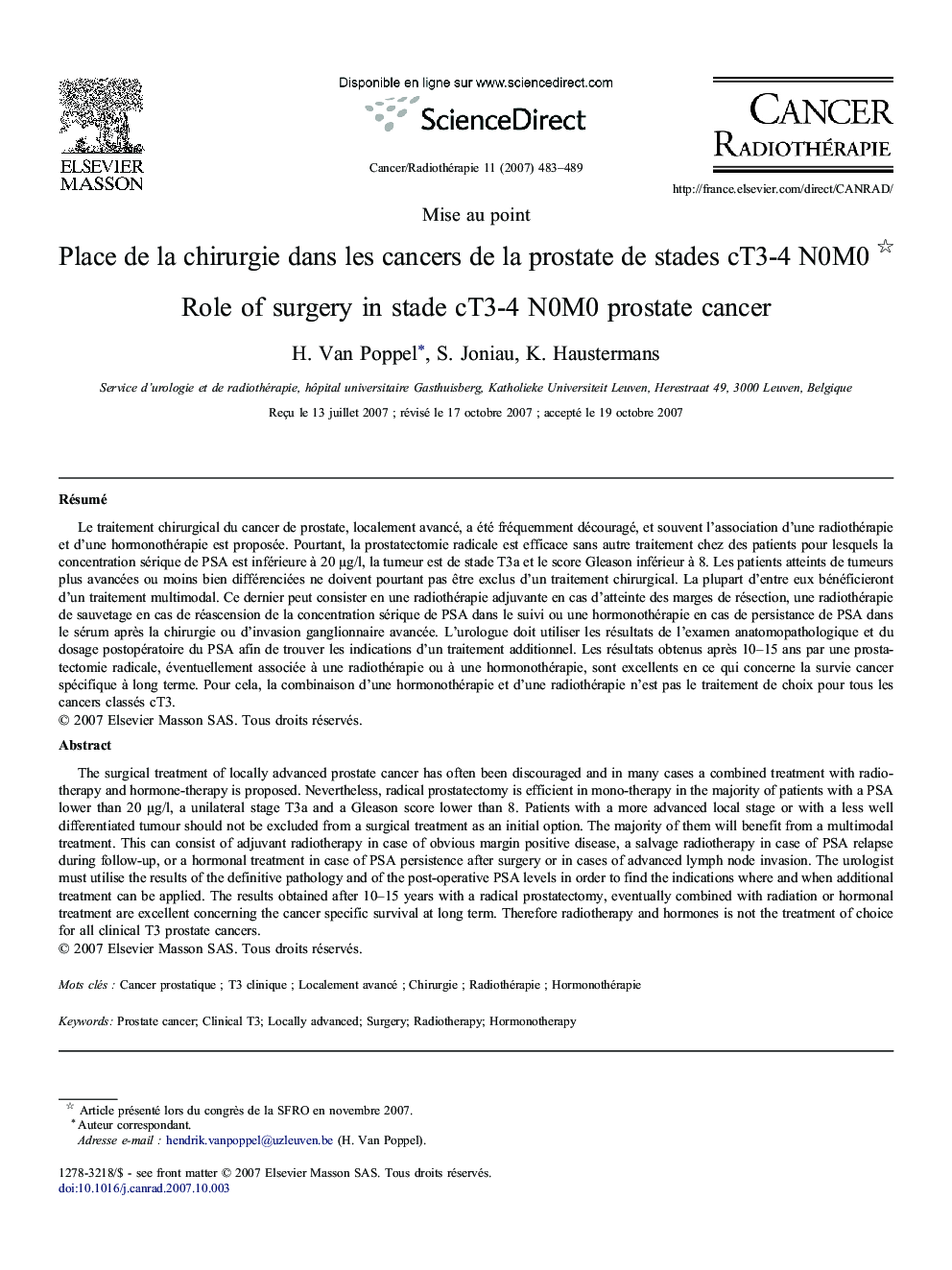| کد مقاله | کد نشریه | سال انتشار | مقاله انگلیسی | نسخه تمام متن |
|---|---|---|---|---|
| 2118864 | 1085254 | 2007 | 7 صفحه PDF | دانلود رایگان |

RésuméLe traitement chirurgical du cancer de prostate, localement avancé, a été fréquemment découragé, et souvent l'association d'une radiothérapie et d'une hormonothérapie est proposée. Pourtant, la prostatectomie radicale est efficace sans autre traitement chez des patients pour lesquels la concentration sérique de PSA est inférieure à 20 μg/l, la tumeur est de stade T3a et le score Gleason inférieur à 8. Les patients atteints de tumeurs plus avancées ou moins bien différenciées ne doivent pourtant pas être exclus d'un traitement chirurgical. La plupart d'entre eux bénéficieront d'un traitement multimodal. Ce dernier peut consister en une radiothérapie adjuvante en cas d'atteinte des marges de résection, une radiothérapie de sauvetage en cas de réascension de la concentration sérique de PSA dans le suivi ou une hormonothérapie en cas de persistance de PSA dans le sérum après la chirurgie ou d'invasion ganglionnaire avancée. L'urologue doit utiliser les résultats de l'examen anatomopathologique et du dosage postopératoire du PSA afin de trouver les indications d'un traitement additionnel. Les résultats obtenus après 10–15 ans par une prostatectomie radicale, éventuellement associée à une radiothérapie ou à une hormonothérapie, sont excellents en ce qui concerne la survie cancer spécifique à long terme. Pour cela, la combinaison d'une hormonothérapie et d'une radiothérapie n'est pas le traitement de choix pour tous les cancers classés cT3.
The surgical treatment of locally advanced prostate cancer has often been discouraged and in many cases a combined treatment with radiotherapy and hormone-therapy is proposed. Nevertheless, radical prostatectomy is efficient in mono-therapy in the majority of patients with a PSA lower than 20 μg/l, a unilateral stage T3a and a Gleason score lower than 8. Patients with a more advanced local stage or with a less well differentiated tumour should not be excluded from a surgical treatment as an initial option. The majority of them will benefit from a multimodal treatment. This can consist of adjuvant radiotherapy in case of obvious margin positive disease, a salvage radiotherapy in case of PSA relapse during follow-up, or a hormonal treatment in case of PSA persistence after surgery or in cases of advanced lymph node invasion. The urologist must utilise the results of the definitive pathology and of the post-operative PSA levels in order to find the indications where and when additional treatment can be applied. The results obtained after 10–15 years with a radical prostatectomy, eventually combined with radiation or hormonal treatment are excellent concerning the cancer specific survival at long term. Therefore radiotherapy and hormones is not the treatment of choice for all clinical T3 prostate cancers.
Journal: Cancer/Radiothérapie - Volume 11, Issue 8, December 2007, Pages 483–489